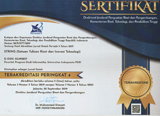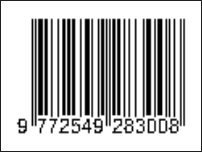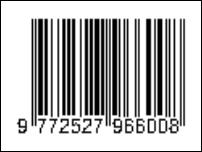Smart Trash Menggunakan Sensor Ultrasonik dan Arduino Uno Berbasis IoT
(1)
(2) Universitas Nasional
(3) Universitas Nasional
(*) Corresponding Author
Abstract
The Covid-19 pandemic has forced us to adhere to health protocols. Thus, making people more careful not to come into direct contact, one of which is by not opening and closing trash cans that are often used together with many people. Sometimes people are also lazy to open the lid of the trash can and let the garbage sit on the lid of the trash can so that it is scattered and can become a nest of all kinds of diseases. The purpose of this research is to make the smart trash can open and close automatically and find out the available capacity in the smart trash. The ultrasonic sensor has a minimum and maximum limit with a sensor range of 0-30 cm detecting people the smart trash will automatically open, if it exceeds the range limit the smart trash will not open. If it is detected by the sensor but the smart trash is full, it will not open. In the range of the smart trash height of 25cm to determine the status of the smart trash capacity on the LCD, if the smart trash capacity is 10-100% then it is available, if the LCD status is less than 10% then it is full. The Fuzzy Logic algorithm is used to determine the rules for the level of distance accuracy (cm). The resulting value is a distance of 17.5- 25cm status is available, if a distance of 10-17.5cm status is available, if a distance of 2.5-10cm status is available, if a distance is 0-2 ,5cm full state. On the accuracy of the Naïve Bayes algorithm using rapidminer software that the accuracy of the success of the servo motor is 87.33%.
Keywords
Full Text:
PDFReferences
M. Furqan, R. Kurniawan, and I. G. Br Rambe, “Tempat Sampah Pintar Dengan Logika Fuzzy Berbasis NodeMCU,” Indones. J. Comput. Sci., vol. 9, no. 1, pp. 11–21, 2020, doi: 10.33022/ijcs.v9i1.256.
Sukarjadi, D. T. Setiawan, Arifiyanto, and M. Hatta, “Perancangan Dan Pembuatan Smart Trash Bin Berbasis Arduino Uno Di Universitas Maarif Hasyim Latif,” Tek. Eng. Sains J., vol. 1, no. 2, pp. 101–110, 2017.
D. Nusyirwan, R. Dharmawan, T. Sampah, P. Dengan, and P. Suara, “Tempat Sampah Pintar Dengan Perintah Suara Guna Mehilangkan Prilaku Siswa Membuang Sampah Sembarangan Di Sekolah,” Jurnal TEKNOINFO,” vol. 14, no. 1, pp. 48–58, 2020.
David, “Rancang Bangun Tempat Sampah Pintar Menggunakan Algoritma Fuzzy Logic Berbasis Arduino,” J. Informatics Telecommun. Eng., vol. 2, no. 2, pp. 62–68, 2019.
Y. Widiastiwi, C. A. Satria, , “The Effectiveness of Utilizing IoT-Based Smart Trash,” International Conference on Informatics, Multimedia, Cyber and Information System (ICIMCIS) pp. 290–295, 2021.
R. Ahmad Ma, N. Hayati, and F. Fauziah, “Sistem Monitoring Tempat Sampah Pintar Secara Real- time Menggunakan Metode Fuzzy Logic Berbasis IOT,” J. Infomedia, vol. 4, no. 2, pp. 69–74, 2019, [Online]. Available: http://e-
jurnal.pnl.ac.id/index.php/infomedia
/article/view/1571.
E. Ardiansyah, H. Fitriyah, and D. Syauqy, “Sistem Penghitung Jumlah Orang Otomatis Pada Pintu Masuk Berbasis Sensor Ultrasonik dan Mikrokontroler Arduino Uno dengan Metode Bayes,” Jurnal Pengembangan Teknologi Informasi dan Ilmu Komputer, vol. 3, no. 1, pp. 673–678, 2019.
L. Fitria, F. Amir, R. Bahri, C.
Linkage, and S. Trash, “Smart Trash Menggunakan Metode Clustering Dengan Pendekatan Centroid
Linkage,” Jurnal Teknologi Universitas Muhammadiyah Jakarta,vol. 12, no. 2, 2020.
DOI: http://dx.doi.org/10.30998/string.v6i3.11986
Refbacks
- There are currently no refbacks.
Copyright (c) 2022 imam Pambudi Utomo

This work is licensed under a Creative Commons Attribution 4.0 International License.
STRING (Satuan Tulisan Riset dan Inovasi Teknologi) indexed by:

Ciptaan disebarluaskan di bawah Lisensi Creative Commons Atribusi 4.0 Internasional.
View My Stats

 Sertifikat Akreditasi
Sertifikat Akreditasi
















